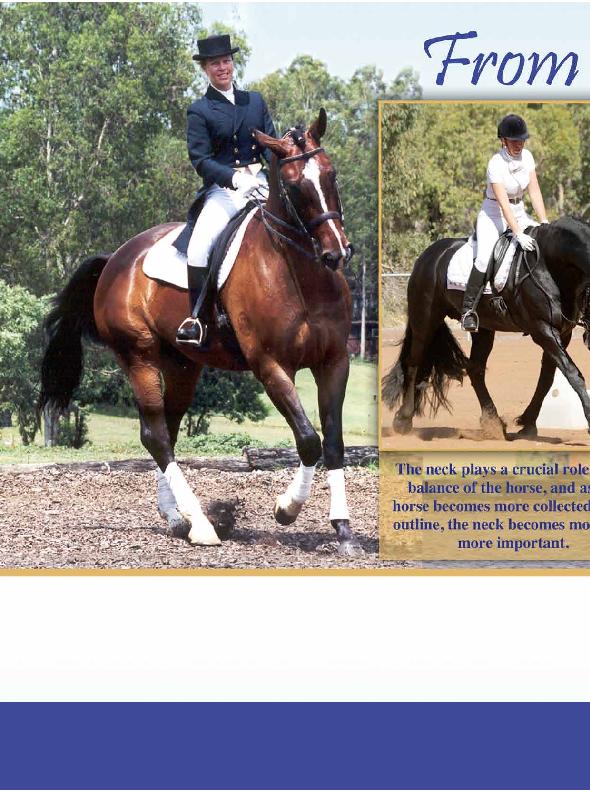
October November 2012
T
he neck plays a crucial role in the balance of the horse and, as the horse becomes
more collected in the outline, the neck becomes more and more important. It is easy
to understand that by working the quarters hard they will improve in their outline,
even when the horse is not engaged the quarters still improve in looks. This is clear when
looking at racehorses that have been on the track for a while - they will have strong quarters
and a relatively skinny neck. All the power comes from behind and, because the horse uses
the quarters only for forward propelling, the neck does not need to be developed to act as
a counter weight.
In the foal the neck is short and the vertebrae in the neck are in an S-bend. The first job as
a trainer is to straighten this S-bend in the neck with very young horses, therefore softness
(when the jaw of the horse is loose and submissive) should not be asked for. Often this is
Photo by Brooke Benbow
Photo by Bert Hartog

